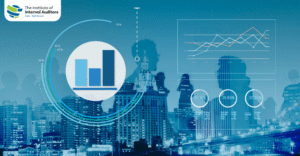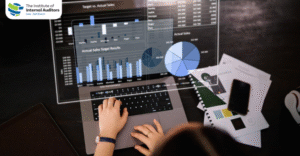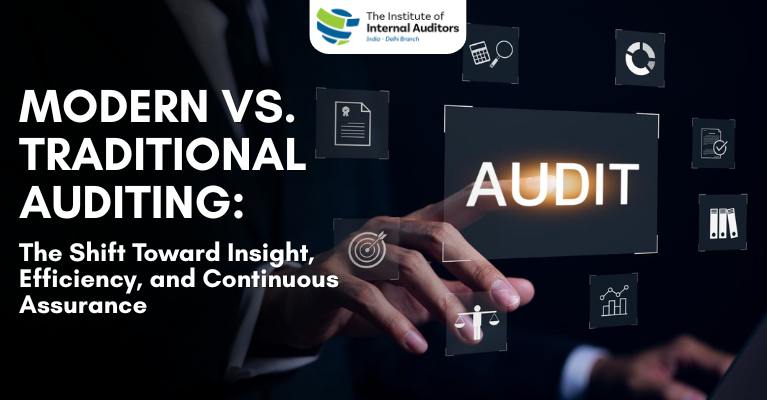The audit profession in 2025 stands at the intersection of technology and trust. While traditional auditing models focused on verifying compliance and detecting historical errors, modern auditing emphasizes proactive insight, continuous risk monitoring, and the strategic use of data analytics and artificial intelligence (AI). This article explores the evolution of auditing, highlights practical transformation journeys from large enterprises, and reflects on current research from leading professional firms such as Deloitte, KPMG, and PwC, as well as the Institute of Internal Auditors (IIA). It concludes with guidance on how audit leaders can harness digital innovation while upholding the fundamental principles of independence, objectivity, and ethical judgment (IIA Standard 5.1 – Independence and Objectivity).
The Legacy of Traditional Auditing
Traditional auditing has long been grounded in rigorous manual procedures, extensive documentation, and post-event analysis. Auditors typically relied on limited data sampling, manual walkthroughs, and physical verification to assess control effectiveness. This model was suitable when processes were paper-based, transaction volumes were smaller, and risk profiles relatively stable. However, as business processes became digitized and globalized, the traditional audit approach faced increasing challenges — notably delayed detection of control failures, limited data coverage, and reduced agility in responding to emerging risks.
Despite these limitations, traditional auditing established the ethical and procedural foundation for the profession — independence, professional skepticism, and evidence-based assurance (IIA Standard 4.1 – Integrity and Due Professional Care). Modern auditing does not abandon these values; it builds upon them by leveraging technology to increase relevance, depth, and efficiency.

Modern Auditing: Data-Driven and Continuous
Modern auditing reimagines assurance as an ongoing, technology-enabled discipline. Instead of static testing cycles, auditors now utilize real-time data feeds, robotic process automation (RPA), and AI-enabled analytics to evaluate entire data populations (IIA Standard 9.3 – Use of Data Analytics and Technology). According to Deloitte’s 2025 report, ‘Global Internal Audit Hot Topics’, audit functions are evolving into strategic advisors—leveraging GenAI, data analytics, and digital ethics to identify systemic issues and predict control failures before they occur. Similarly, KPMG’s 2025 paper on ‘Advanced IT Internal Audit Planning’ emphasizes how auditors are broadening their oversight to include cybersecurity, data privacy, and algorithmic accountability (IIA Standard 8.2 – Technology Risk Coverage). Meanwhile, the IIA’s 2025 Global Standards encourage internal auditors to employ technology to deliver continuous assurance while maintaining transparency and professional judgment (IIA Standard 10.1 – Continuous Auditing and Monitoring).
Traditional vs. Modern Auditing: A Comparative View
| Dimension | Traditional Auditing | Modern Auditing (Aligned with 2025 IIA Standards) |
| Objective | Compliance and control validation | Strategic assurance and value creation |
| Approach | Periodic, checklist-based | Continuous, data-driven, and agile |
| Scope | Transactional and departmental | Enterprise-wide and strategic |
| Methodology | Sampling and manual walkthroughs | Data analytics, automation, AI, and visualization |
| Reporting | Static issue logs | Insight-driven dashboards and storytelling |
| Stakeholders | Primarily management | Boards, audit committees, and risk owners |
| Value Proposition | Reliability and compliance | Governance, foresight, efficiency, and strategic insights |
Case Study 1: AI-Powered Fraud Detection in a Property & Casualty Insurance Company
Insurance fraud was costing the company billions annually, with soft fraud (e.g., inflated claims) accounting for 60% of incidents. Traditional rules-based systems were insufficient to detect complex or staged fraud. A leading property and casualty insurer operating across the U.S. and India deployed AI-powered multimodal technologies to combat rising fraud, particularly soft fraud such as inflated claims. The solution integrated natural language processing to flag suspicious language, image and video analysis to detect tampered evidence, geospatial tools for damage verification, IoT data from vehicles and smart homes, and simulation models to uncover coordinated fraud rings. This transformation significantly improved detection accuracy, reduced false positives, and enabled real-time scoring of millions of claims. Human investigators were freed to focus on complex cases, with projected industry-wide savings estimated between $80 billion and $160 billion by 2032.
Case Study 2: Continuous Monitoring at a Manufacturing Conglomerate
A global manufacturing group operating across 50+ jurisdictions transitioned from quarterly audits to a continuous monitoring framework. Using automated scripts integrated into ERP systems, key financial and operational controls were tested daily. As a result, anomalies such as duplicate payments and procurement irregularities were flagged instantly. The organization improved its control coverage from 10% sampling to 100% transaction analysis and reduced repeat control failures by 35% (IIA Standard 10.1 – Continuous Auditing and Monitoring). This transformation allowed auditors to spend more time on root-cause analysis and advisory work rather than transactional review (IIA Standard 6.2 – Advisory Role and Value Delivery).
Case Study 3: AI-Enabled Audit Analytics in a Technology Firm
A leading technology enterprise with high-volume data flows adopted machine learning for its internal audit analytics in 2024. By training algorithms to detect unusual journal entries, vendor anomalies, and outlier behaviors, the audit team moved toward predictive risk identification. By 2025, exception detection accuracy improved by 70%, audit hours decreased by 60%, and management confidence in internal audit insights significantly increased (IIA Standard 9.2 – Data Reliability and Model Governance). Importantly, the AI models were designed to ensure audit traceability and explainability, in line with emerging regulatory expectations (IIA Standard 4.2 – Professional Judgment and Accountability).

Recent Trends in 2025
In 2025, internal audit’s role continues to expand beyond compliance. The IIA’s ‘Building a Better Auditor’ feature highlights the growing demand for multidisciplinary auditors skilled in data visualization, automation design, and change management (IIA Standard 3.1 – Competence and Continuous Development). Deloitte’s 2025 outlook emphasizes the ethical governance of GenAI and digital models, while AuditBoard’s ‘2025 Resolutions’ underscores the need for agile planning and risk-focused automation. Cherry Bekaert’s 2025 analysis of the new IIA Standards further reinforces that technology enablement, combined with auditor judgment, defines the modern audit era.
Risks and Ethical Considerations
While digital transformation enhances audit value, it also introduces new risks. Data privacy and cybersecurity remain key concerns, especially as auditors access sensitive datasets (IIA Standard 8.1 – Information Security and Confidentiality). Overreliance on AI models may erode professional skepticism if algorithms are not explainable or independently validated. Deloitte (2025) warns that governance frameworks must evolve to ensure accountability in AI-enabled auditing. The IIA’s 2025 standards also stress that internal auditors must maintain objectivity, ensuring technology serves assurance objectives rather than replacing human judgment (IIA Standard 5.1 – Independence and Objectivity).
Conclusion
The evolution from traditional to modern auditing represents more than a technological upgrade—it is a philosophical shift in how assurance is conceived and delivered. While traditional methods ensured compliance and reliability, modern auditing provides foresight, efficiency, and real-time insights. As the profession advances through 2025 and beyond, internal auditors must blend analytical intelligence with ethical discipline to remain trusted advisors (IIA Standard 1.1 – Purpose of Internal Auditing). Ultimately, modern auditing’s promise lies not only in automation but in its ability to empower auditors to interpret complex data, guide strategic decisions, and reinforce stakeholder trust in an increasingly digital world (IIA Standard 12.1 – Communication and Stakeholder Engagement).
Disclaimer: The views expressed are solely those of the author and do not represent those of the publishing organization
About the author:

Jaya Sarpal is a Manager in Internal Audit at Optum (UnitedHealth Group) with over 12 years of experience in audit, risk, and compliance. An MBA in Finance and Certified Fraud Examiner (CFE), she focuses on advancing audit innovation through analytics, automation, and emerging technologies.
References
1. Deloitte (2025). Global Internal Audit Hot Topics in 2025 | Deloitte US.
- KPMG (2025). Advanced IT internal audit planning for 2025
- Cherry Bekaert (2025). 2025 New IIA Standards: Key Changes & Considerations | Cherry Bekaert
- The Institute of Internal Auditors (2025). Building a Better Auditor: Internal Audit Transformation | Internal Auditor Magazine
- Deloitte Insights – AI to Fight Insurance Fraud
